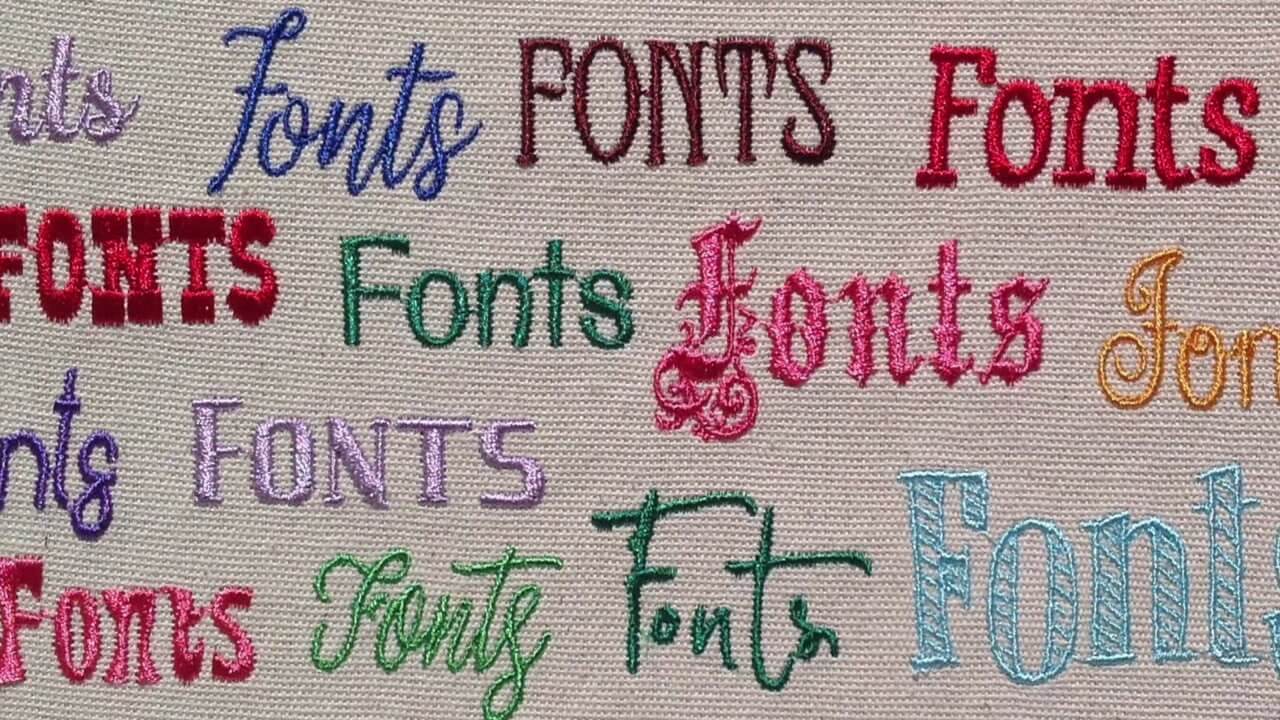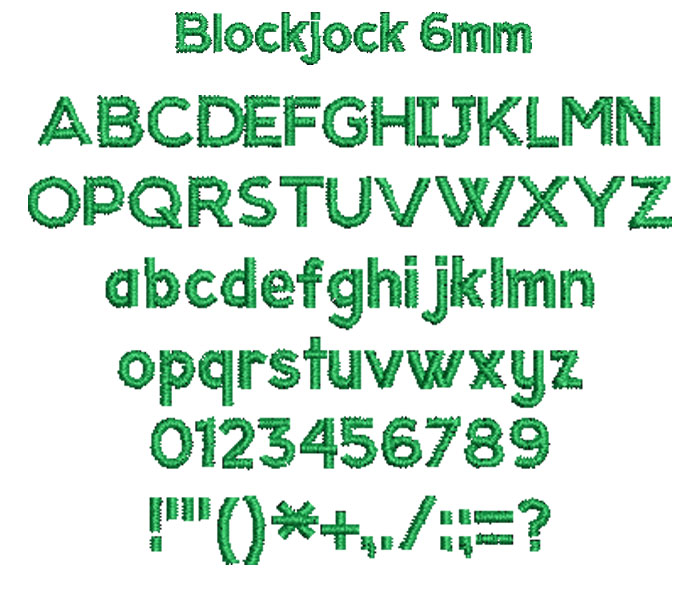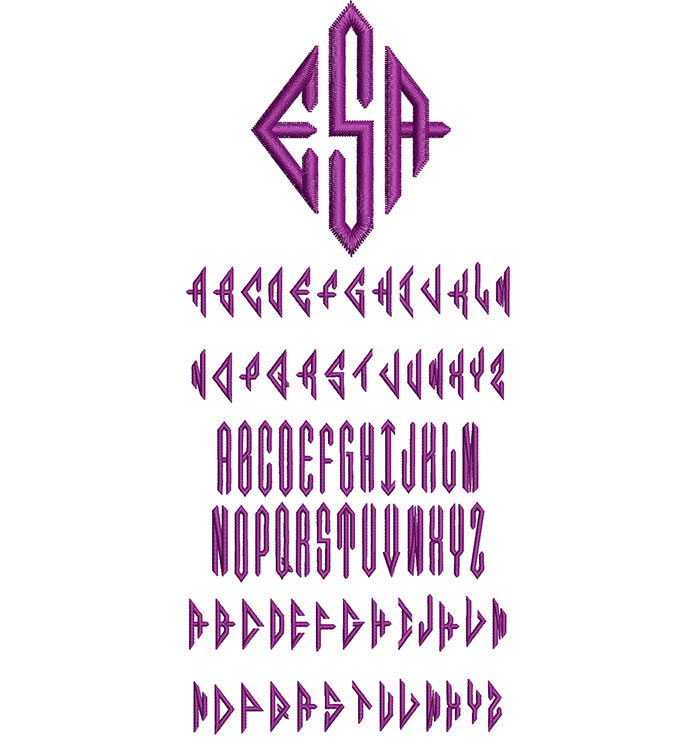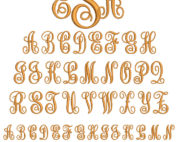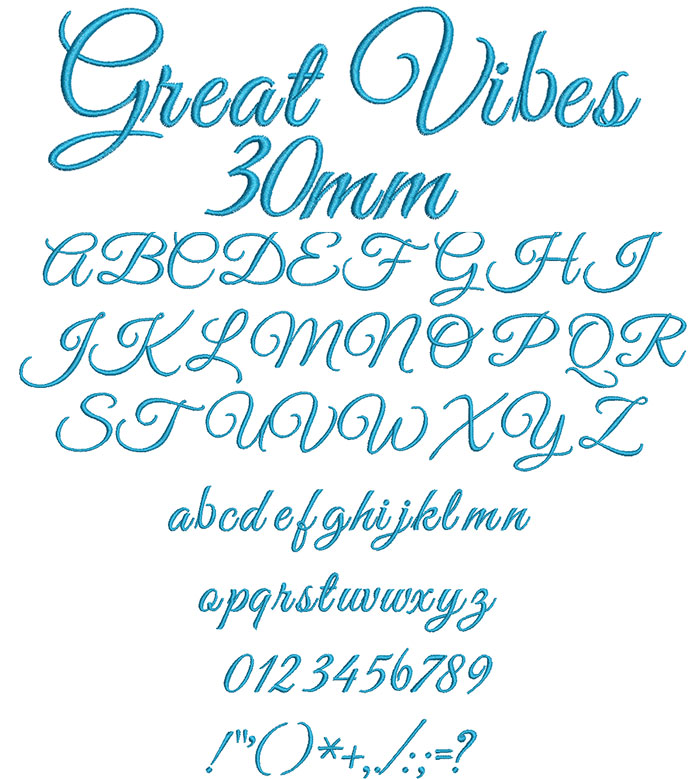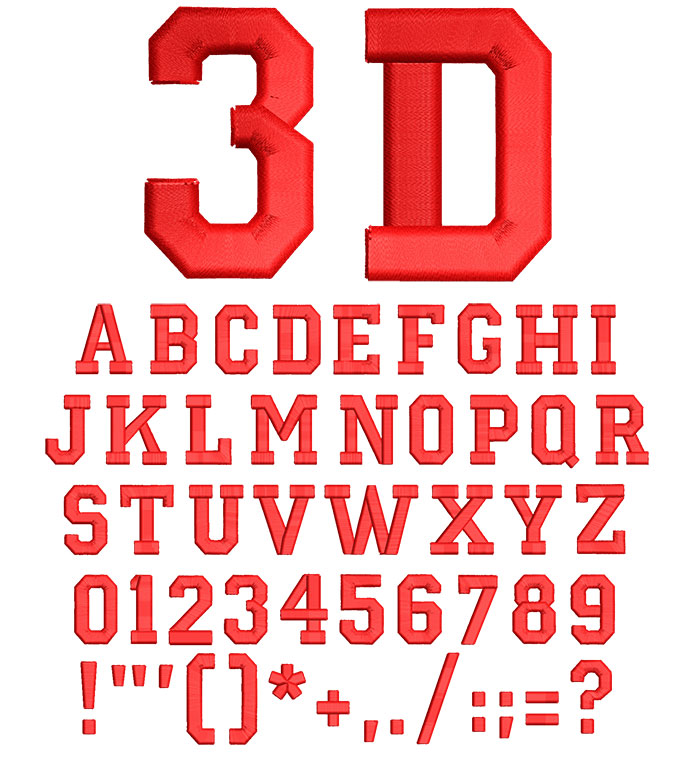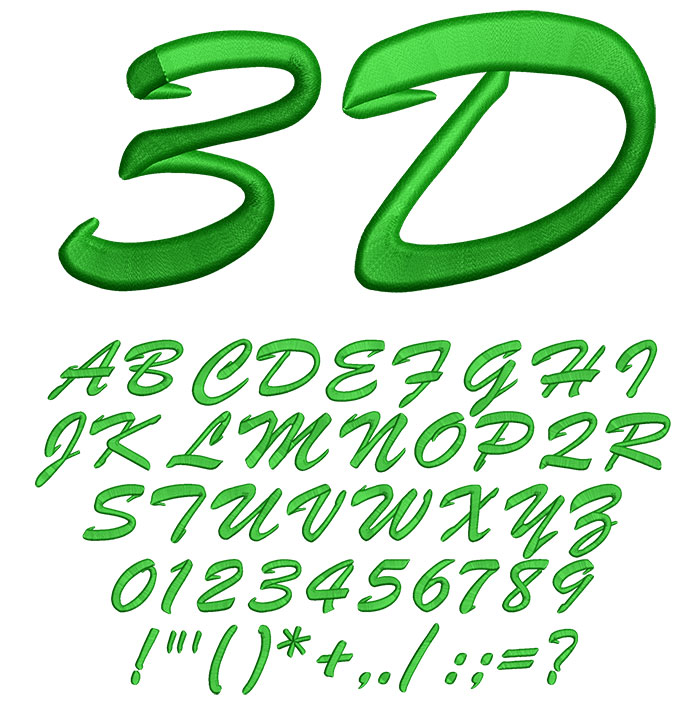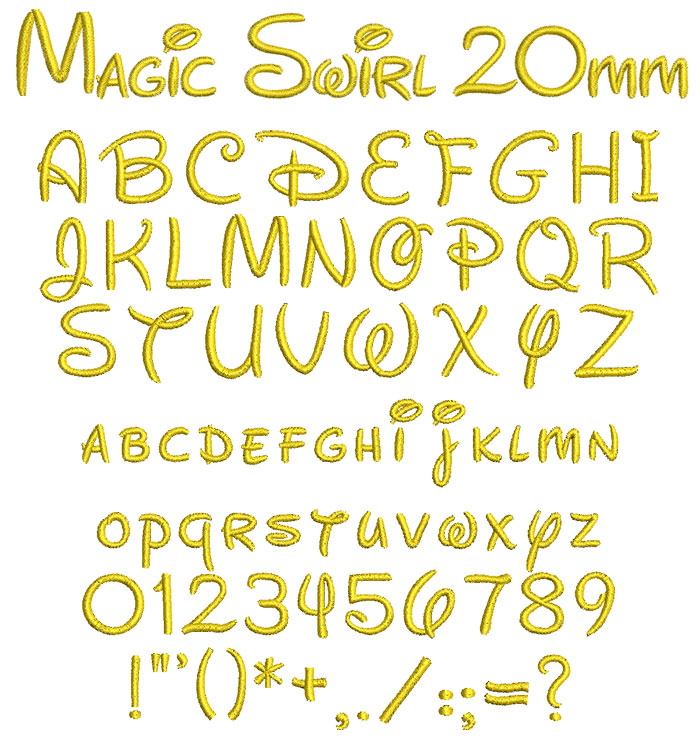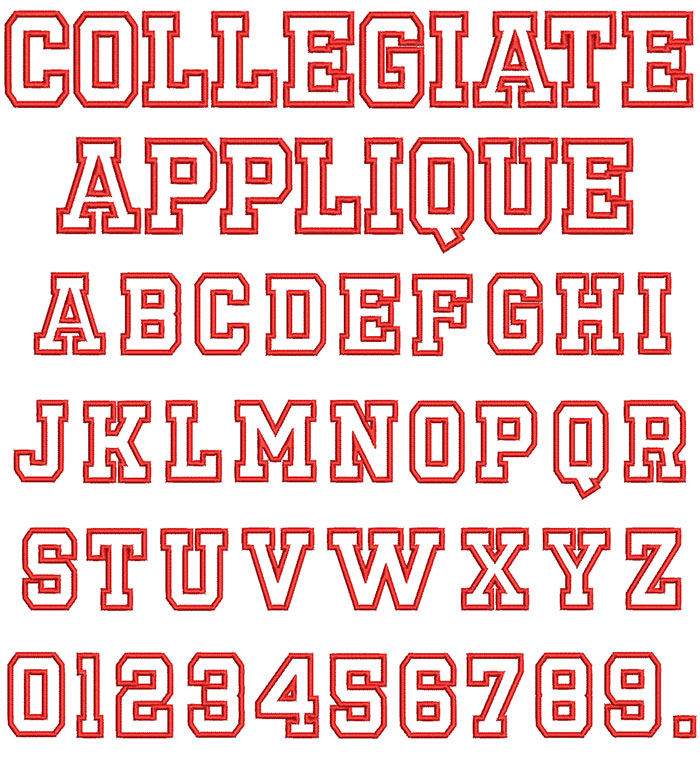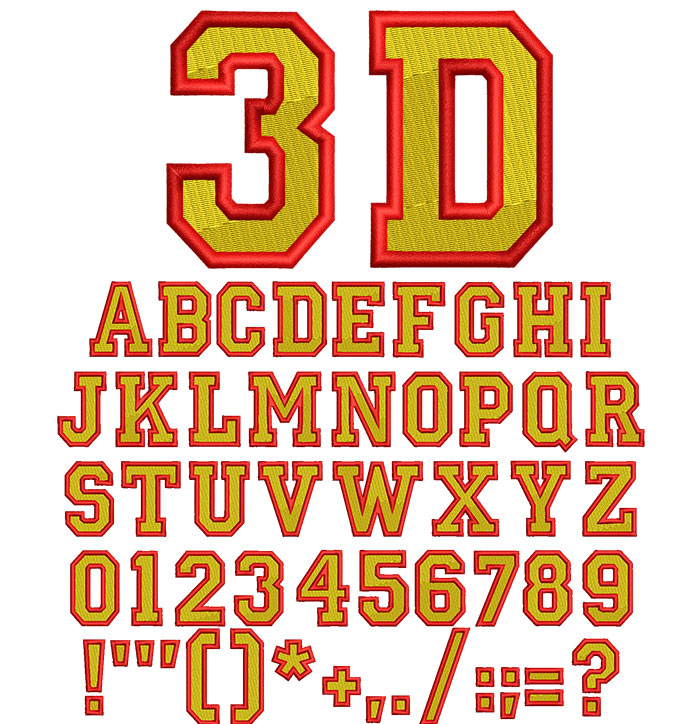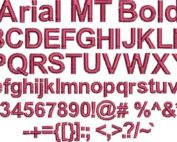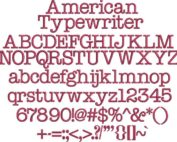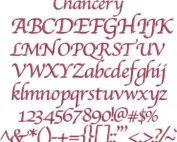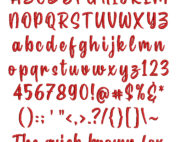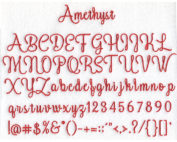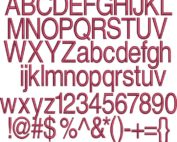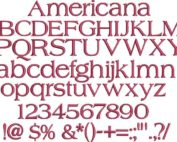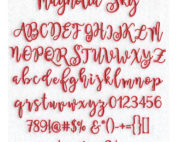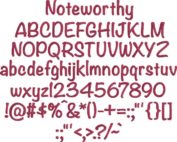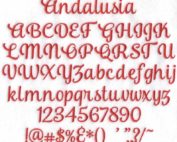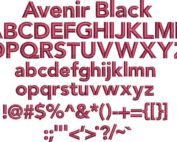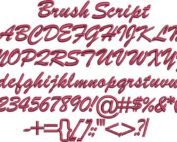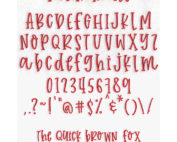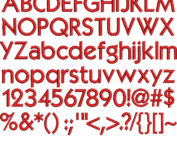Embroidery Fonts: 1000+ Designs & Your Guide for Best Results
ESA Fonts

These keyboard font sets load directly into your Hatch or Wilcom E series embroidery software and are 100% customizable. We have the world’s largest collection with close to 1000 to choose from!
BX Fonts
BX Fonts

These keyboard font sets load directly into your Embrilliance embroidery software. We have over 150 to choose from.
ESA Fonts

These keyboard font sets load directly into your Hatch or Wilcom E series embroidery software and are 100% customizable. We have the world’s largest collection with close to 1000 to choose from!
Stitch File Fonts
Stitch File Fonts

These are single-letter embroidery designs. These fonts/letters have been digitized and converted to embroidery machine formats.
Our Top ESA Embroidery Fonts
Our Top BX Embroidery Fonts
Machine embroidery fonts can make or break any project. Even with the perfect design, if your lettering doesn’t look good, your creation doesn’t either. Having created over 10 million pieces of embroidery and worked with dozens of fortune 500 companies over the past 65+ years, trust us when we say that all embroidery font types these days are NOT equal.
With many different types of machine embroidery fonts available, it can be confusing to know what the difference is and which to use… Thankfully, we’re here to help you get the best-embroidered results!

Embroidery Font Types Explained & Ratings
One of the greatest innovations for customizing your machine embroidery projects was the invention/use of “keyboard fonts” (lettering that you can type out using your keyboard). They make creating custom design layouts much easier and less time-consuming. But, which type should you use?
Embroidery Fonts Overview:
ESA fonts (Embroidery Specific Alphabets) are the most advanced and customizable type of embroidery fonts available because they are native font files. They are the gold standard in commercial embroidery.
Unlike stitch file fonts, ESA fonts aren’t just finished designs that have been assigned a keystroke. Instead, they’re node-based objects built into your software that can be customized almost any way you see fit!
Being 100% object-based, they can be resized, re-shaped, and have their digitized properties altered (stitch count, underlay, stitch type, etc.) at the click of a button based on the fabric type you’ll be stitching on.
Here are some features of ESA fonts that make them stand out from other fonts:
ESA Fonts Join Closest Point to Save You Time:
Fonts that “join the closest point” mean that the files will not generate trims between each letter when running on the machine. This is very important from a production standpoint because it saves you a ton of time. Every unnecessary trim command within a text layout is lost production time, to the extent of 120 stitches for every trim generated on a machine, to be exact. I know that may sound excessive, but if you consider that a machine is going full speed for every trim, then it has to slow down, tie-out, and activate the trimmer. Then the needle moves to the next position, ties-in, and has to ramp back up to full speed. Make sense?
That’s why the stitch counts we see within a design are not always accurate regarding the actual time it takes to run on the machine. For example: If a few text lines consisting of 50 letters and 10 words have a stitch count of 5000 and the machine is running at 500 stitches per minute, you’d assume the designs would take 10 minutes to run. BUT if that design has a trim at every letter, you need to add an additional 6000 stitches (50 x 120 stitches) of run time! That 5000-stitch design has a run time of 11000 stitches, a whopping 22 minutes of run time compared to the original 10!
As you can see, every unnecessary trim has a significant impact on how long it takes your project to stitch out and even how the back of your embroidered project looks (you don’t want a bunch of random tie-out tails hanging). This is incredibly important for anyone embroidering as a business because time is money!
Use Fabric Assist with ESA Fonts for the Best Possible Results on ANY Type of Fabric:
ESA fonts allow you to choose the specific fabric type that you’re going to stitch your design on and automatically alter the underlay, density, and pull compensation to ensure the best results possible. This is literally every embroiderer’s dream come true… Better quality at the click of a button!
ESA Fonts are Easy to Resize to Fit Virtually any Project:
ESA fonts are 100% object-based making them very friendly when it comes to resizing, especially with increasing size. Although the fonts can be decreased marginally, they can be increased in size almost without limitation.
Because they are objects, you can make changes at the click of a button that will properly adjust effects & stitch settings as the fonts’ size increases.
You can automatically split stitches when widths go past 7mm and change the stitch types from satins to other stitch types:
ESA Fonts are Easy to Edit & Reshape:
Being 100% object-based, ESA fonts are incredibly easy to edit & adjust! Simply click and drag any of the nodes within the shape of a letter to adjust how it appears and the software will automatically adjust the stitches in between! Whether you want to make the tail of a “Q” swirl up or place an arrow at the top of an “N”, ESA fonts make it incredibly easy! You can move, add or change nodes within any letter! Plus, change and add stitch angles.
Now I know we’ve built up ESA fonts a lot… But that’s because they really are a game-changer in the home embroidery industry! I could go on about ESA fonts all day and cover more amazing features, but if you haven’t already, you really should try them for yourself.
Click here to download a free 30-day free trial of Hatch and see for yourself what makes ESA fonts so special. This full-featured demo has no limits (you can stitch out your creations) and will give you access to over 100 ESA fonts… Plus, we’ll even throw in some bonuses! If you do a lot of embroidery lettering or monogramming, ESA fonts will save you hours of frustration… What do you have to lose?
Click here to browse our database of close to 1000 ESA embroidery fonts.
BX fonts have allowed digitizers to take their created stitch file fonts (or finished embroidery designs) and assign a keystroke (key on the keyboard) to each letter so they can be easily typed out within Embrilliance software. Although very convenient, they do have the same limitations as stitch file fonts when it comes to resizing or editing them (it’s best to leave them as they are).
To give credit where credit is due, the innovation of BX fonts was a good idea over a decade ago and because they’ve been around the home market for so long, there are a lot out there to choose from!
The main benefit is that it has allowed digitizers who’ve created fonts to have a user-friendly way of having their customers utilize them.
Many digitizers have used this service, and to be honest, I think that’s the primary problem with this type of embroidery font. Regardless of their experience, anyone can generate and sell a BX font, which has flooded the market with poorly digitized & auto-digitized BX fonts. Because of this, your results with BX fonts will vary quite a bit depending on who digitized each set (not the company that sold them, as many companies use numerous digitizers or sell 3rd party fonts).
To be fair, many digitizers do great work who have converted their fonts to BX, but at the same time, the number of mediocre digitizers who have created BX fonts far outnumbers the good ones (don’t worry, we guarantee that all of our BX fonts were digitized properly).
Important improvement worth noting: The BX format developers recently released a “simulation” of Hatch/Wilcom’s world-leading object-based ESA font technology within the highest level of their Stitch Artist software’s digitizing module. These are called “Native BX Fonts”. Although there aren’t a ton of these available on the market, native BX fonts reliably produce quality results! Instead of being stitch file fonts that have been assigned a keystroke like normal BX fonts, BX native fonts are node-based fonts (almost like ESA fonts) that can be easily customized, resized, and edited. We currently have over 40 native BX fonts available.
Click here to browse our database of over 150 BX embroidery fonts.
In the early days of machine embroidery as a hobby, this is how lettering was primarily done before keyboard fonts entered the industry. These are single-letter embroidery designs that are not software specific. These fonts/letters have been digitized and converted to embroidery machine formats (such as PES, JEF, XXX, etc.).
- Stitch file fonts have been digitized at a specific size & specific settings, which means that they’ll run best at the size they were created. The more the files/letters are resized or edited, the more they lose quality as they’re finished embroidery designs.
- Although some of these fonts can be beautiful, the real downside of using stitch file fonts is that they are not keyboard-based. When using the font to write a text, the letters need to be inputted individually into a software program and arranged manually. This is a very tedious process and a big factor in why embroidery lettering is rarely done this way anymore.
- Thankfully some software programs now allow you to insert stitch file fonts into your software and assign keystrokes to them so you can use them like keyboard fonts! For example Hatch’s keyboard design collection (KDC) feature and Embrilliance’s font mapper feature.
Click here to browse our database of Stitch File embroidery fonts.
TrueType fonts (or TTF for short) are fonts installed in your embroidery software and automatically converted to embroidery designs when used. It’s kind of like your software auto-digitizing lettering files you select.
Many programs, including Hatch and Floriani, will automatically convert a TrueType font to stitches.
The benefit of using these fonts is the sheer number of them available, but the issue with these is that the quality is a real hit-and-miss scenario.
The first problem that arises is that letters may not path logically for embroidery. An example would be the letter “t”. Usually, when manually Digitizing the letter “t” you would path it the same way you would write it: the vertical stroke first and then the horizontal. When software programs convert TTFs automatically, they don’t take that into account, and it ends up looking like a telephone pole. The more complex the letter, the more margin for error. Generally speaking, with TTFs, the quality of the lettering depends on the shapes used. Often more narrow serif-type fonts will give you better results than block fonts.
In most cases, TTFs were not created with the intent of being used for embroidery. Many fonts are unfriendly in their original form as widths/keystrokes don’t consider the rules of stitches.
In a crunch, they can be a good option but realize that editing is usually required to get embroidery-friendly results.
I’d venture to say that I can usually manually digitize the letters quicker than going in after the fact and cleaning up the “auto-digitized” mess.
| Embroidery Software | Potential Add-ons |
| Hatch Embroidery Software | ESA & TrueType Fonts |
| Wilcom E3 & E4 Embroidery Software | ESA & TrueType Fonts |
| Janome V.5 Embroidery Software | ESA & TrueType Fonts |
| Brother PE Design Embroidery Software | TrueType Fonts |
| Floriani Embroidery Software | TrueType Fonts |
| Bernina Embroidery Software | TrueType Fonts |
| Masterworks III Embroidery Software | TrueType Fonts |
| DIME Embroidery Software | TrueType Fonts |
| Premier Plus Embroidery Software | TrueType Fonts |
| Embird Embroidery Software | TrueType Fonts |
| Embrilliance Embroidery Software | BX Fonts & TrueType Fonts |
**Note that stitch file fonts are not software specific as they are essentially individual embroidery designs of letters.
Want the Best Embroidery Font Results? Try 101 ESA Fonts Free!
Now, if you’re a “fonty” person, do a lot of monogramming, or just want cleaner, more crisp lettering, ESA font technology is a real game-changer. ESA fonts are extremely customizable and go far beyond the limitations of other machine embroidery font types available.
The best part is if you’ve never tried ESA fonts, YOU GET A CHANCE TO PLAY! Not only can you try a free full-featured 30-day Hatch trial, but you can also play with the 101 ESA fonts that come built into the software with your free trial & stitch out anything you create.
Want to Save BIG on Embroidery Fonts?
Save up to 78% on all font sets!
Our fan-favorite Embroidery Legacy Design Club allows you to save up to 78% on our entire library of BX fonts, ESA fonts, and Stitch File embroidery fonts. All font sets can now be downloaded for 5 design points with all Legacy Design Club memberships.

